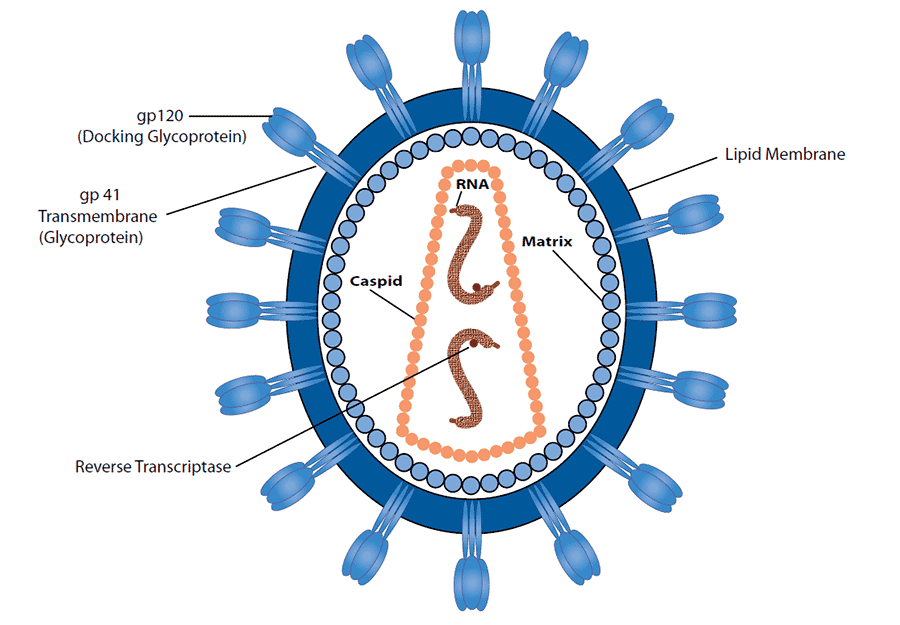Human Immunodeficiency Virus (HIV)
Human immunodeficiency virus (HIV) is a lentivirus that causes acquired immunodeficiency syndrome (AIDS), a condition in humans in which the immune system begins to fail. HIV infects vital cells in the human immune system such as helper T cells, macrophages, and dendritic cells. When T cell numbers decline below a critical level, cell mediated immunity is lost, and the body becomes progressively more susceptible to opportunistic infections.
Transmission
Every 9 ½ minutes, someone in the U.S. is infected with HIV. Infection with HIV occurs by the transfer of bodily fluids, such as blood, semen, vaginal fluid, pre-ejaculate, or breast milk. Within these bodily fluids, HIV is present as both free virus particles and virus within infected immune cells. HIV cannot live for long outside the body, so bodily fluids from an infected person need to be able to enter the body quickly. The virus can enter the body through contact with the bloodstream through a cut or sore, or by passing through delicate mucous membranes.
Prevention
The four major routes of transmission are unsafe sex, contaminated needles, breast milk, and transmission from an infected mother to her baby at birth. Risk during unsafe sex can be eliminated or greatly reduced by choosing to abstain from sex, or to use a condom during every sexual act. Needle exchange programs have been established to reduce the number of HIV infections in drug users and to also provide treatment for drug addiction. Antiretroviral drugs can reduce the chances of the baby becoming infected during birth from an infected mother. Infected mothers are warned against breast feeding their babies. The fifth route is transmission through blood. This is no longer a major route of transmission due to routine blood screening at all blood banks.
Symptoms
There are four stages of an HIV infection, the incubation period, acute infection, latency stage and AIDS. The initial incubation period is asymptomatic and usually lasts between two and four weeks. The second stage, acute infection, lasts an average of 28 days and can include symptoms such as fever, swollen lymph nodes, sore throat, rash, muscle pain, and mouth and esophageal sores. The latency stage shows few or no symptoms and can last anywhere from two weeks to twenty years and beyond. AIDS can present as a variety of symptoms due to various opportunistic infections.
Treatment
There is currently no publicly available vaccine or cure for HIV. Current treatment for HIV infection consists of highly active antiretroviral therapy (HAART). This has been highly beneficial to many HIV-infected individuals since its introduction in 1996. Current HAART options are a combination of drugs consisting of at least two different types of antiretroviral agents. While HAART is very effective at controlling the amount of virus within the body, it does not remove all of the symptoms or cure an HIV infection. Many HIV-infected individuals have experienced remarkable improvements in their general health and quality of life, which has led to a large reduction in HIV-associated morbidity and mortality in the developed world. However, if treatment is stopped, HIV virus levels within the body will increase and can lead to AIDS.
HIV Particle
